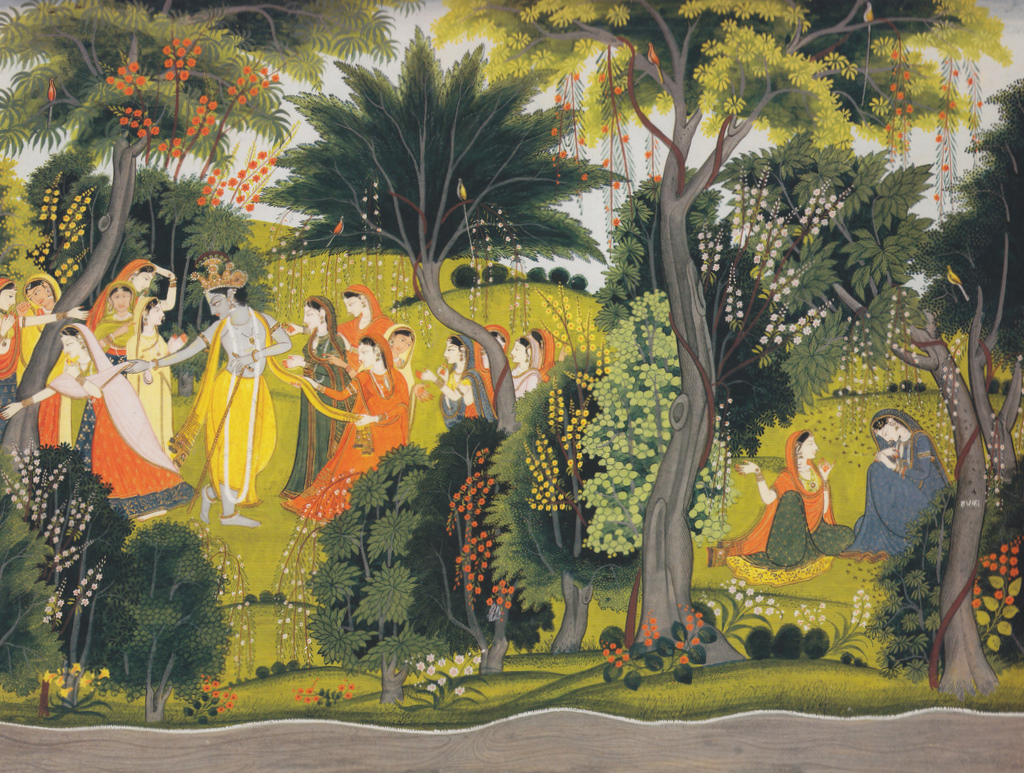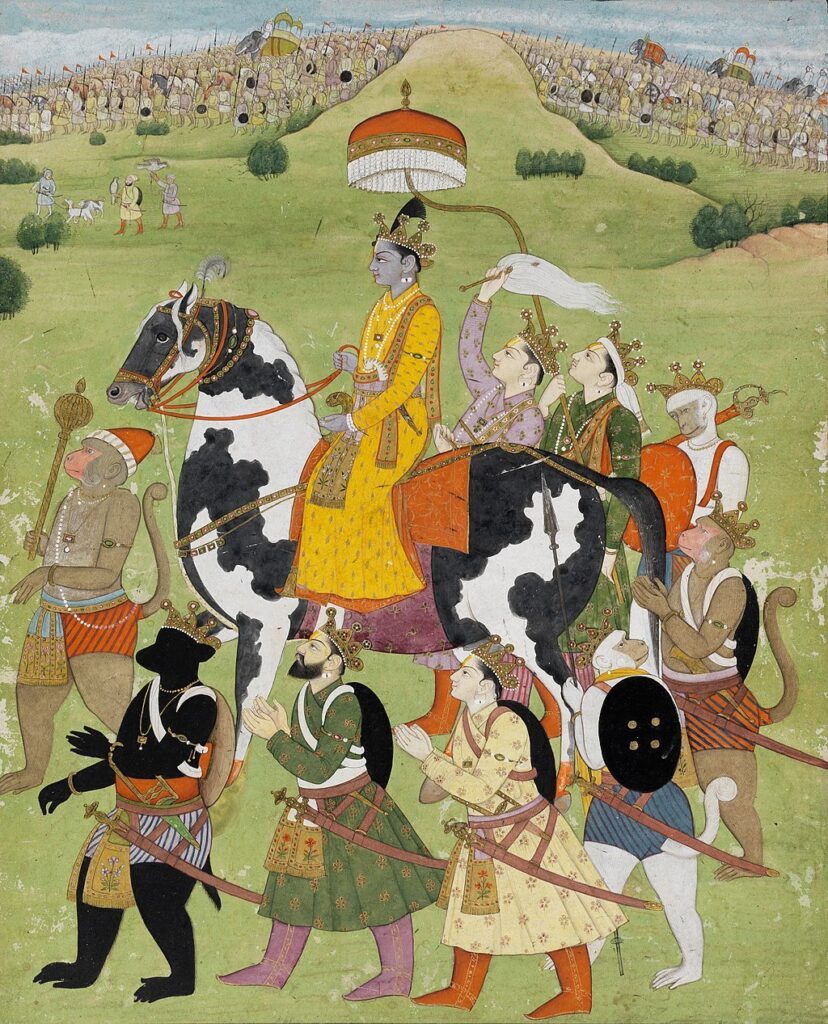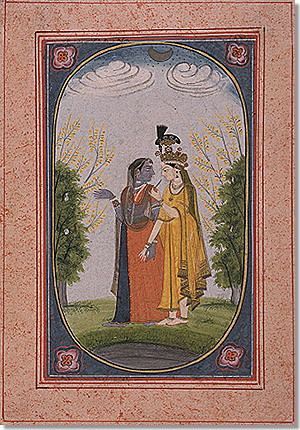Clouds like cotton are floating above in a blue sky touching the great mountains. In the laps of these mountains, in the lush green meadows, underneath a willow tree, Radha is tickling lord Krishna’s feet with a white feather. Their long hair and their beautiful attire are fluid and translucent. They are just enough to show their well-formed figures and their ornaments of gold and colorful gems.

All this is adding charm to their understated beauty. Their eyes which look like the petals of a lotus flower are portraying a certain level of calmness and love. They are looking at each other as if they have achieved the content that we all struggle to find throughout our lives. This is one of the pieces of Kangra Paintings of Himachal.
Roots of Kangra Painting
‘Kangra’ was a princely state in British India which was situated in the lower mountain ranges of the Himalayas. The region presently forms the present Himachal Pradesh. The original style of this painting has its roots in Persia which was brought to India by the Mughals.

The art spread across the empire for five generations. Eventually, the decline of patronage during Later Mughals and Nadir Shah’s invasion led these artists to seek patronage with the Rajput Kings who had their empires in the Lower Himalayas. With the influence of Rajput rulers and their love and devotion for Radha and Krishna, the Bhakti cult became a driving force for the artists.
It was this time when the dominant theme of this art changed from being Mughal portraits to the compositions of Jayadeva. The divine songs of the Cowherd, Gita Govinda, Bhagavad Purana, and Rasmanjiri of Bhau Datta became the center points. The focal theme was of people showing love, affection, celebration, and Shringar (depiction of sensual love) between Krishna and his followers. Even though the philosophy and kingdom deeply influenced the theme of the paintings, the artists were given great freedom to experiment with how they are portraying male and female organs and their emotions to make them living works that do not become stale.
Kangra Painting Features

Kangra Paintings are known for the lyrical blending of the feminine form, natural color, and grace. The colors used in the paintings were different shades of the primary colors which were extracted from minerals, fruits, flowers, and vegetables. These possessed enamel-like luster and were employed to look cool and fresh. The style is aimed to be naturalistic and the ultra-delicate attention to detail is portrayed beautifully. It is the reason that these paintings are easily noticeable in all the paintings.
State of Affairs Today
Today, this art form is on the verge of extinction. Although it is still imitated in our pop culture on postcard reprints, clothes, posters, and other souvenirs. There are rarely any original pieces that are commercially sold.
Some NGOs are trying to sustain and revive the art form. Same as other such painting styles the main issue is the lack of practice and patronage by the artists and people.
